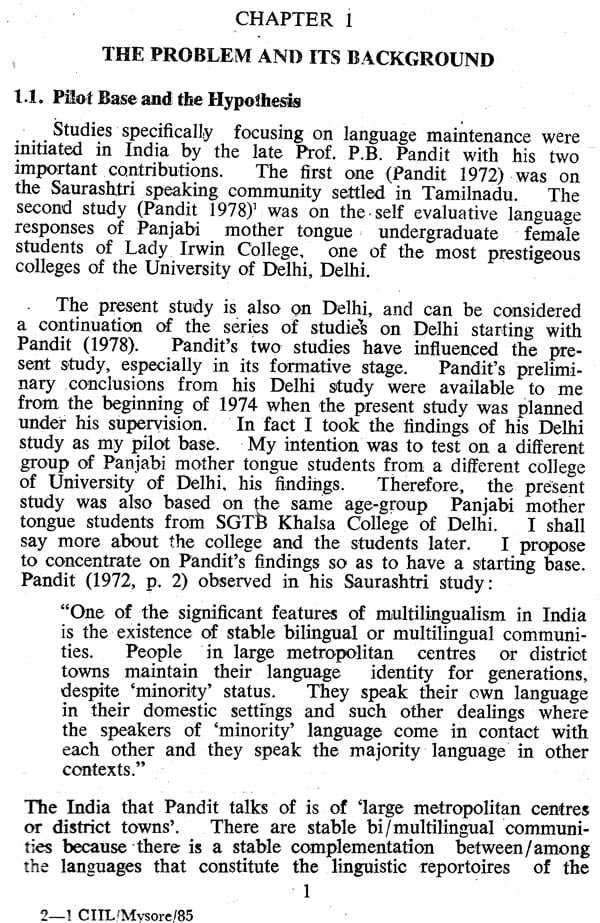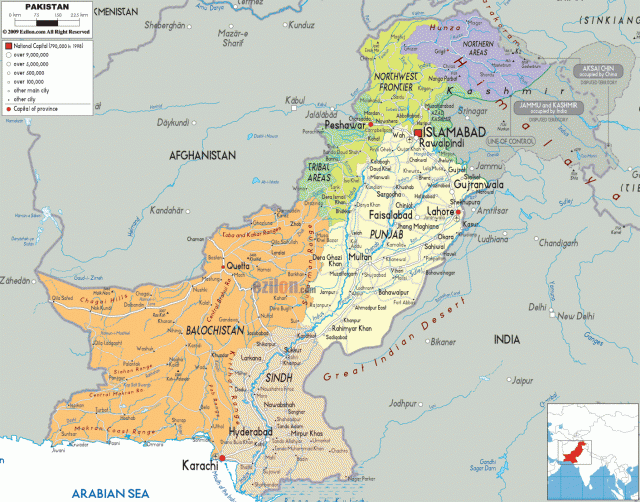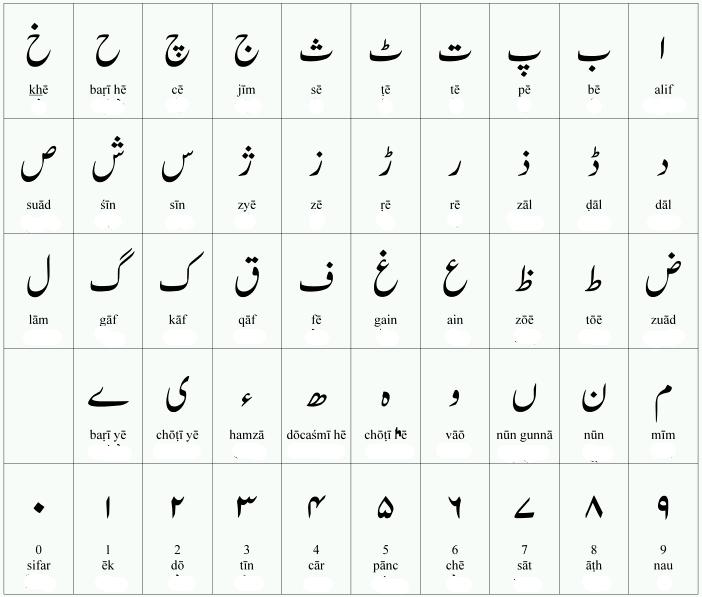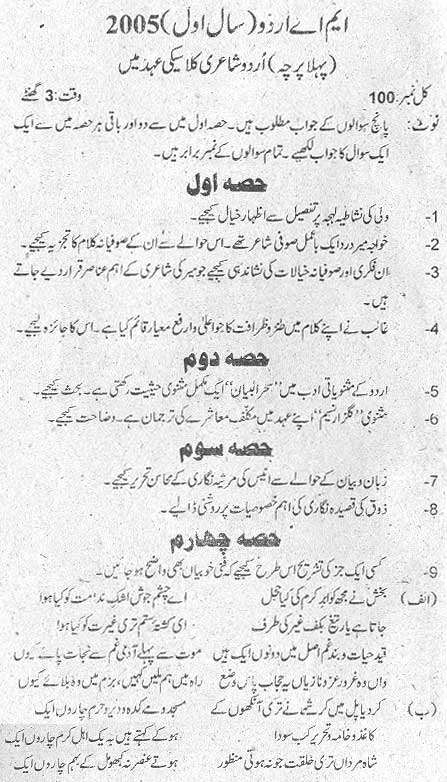Regional languages are the main pillars of any state, they denote the cultural and linguistic diversity. Pakistan is a multilingual state with almost 74 languages spoken in the country , yet major emphasis has been laid on national and international language and little importance is given to the minority languages; which are distinct in every province. Hence, Urdu has acquired the status of dominant language; as most of the regional language speakers are acquiring the language for communicative competence . However, these language attitudes and language changes are more frequent in a multilingual language contact situation; mostly in the urban areas . Therefore, the present study explores the language attitudes and preference of third generation Sindhi and Gujarati speakers living in urban environment i.e. So, by comparative analysis, this study tries to figure out the possible reasons for the linguistic choices and factors for language shift among minority language speakers.
The research site selected for this study is a public sector university and the data for the study was collected using purposive sampling; initially twenty participants were selected, i.e. Sindhi and Gujarati male and female participants, who took part in this study by filling out the sociolinguistic profile form. In order to observe language shift at the individual level, in-depth, semi-structured interviews from were taken from eight participants using critical sampling. The recorded data was transcribed and analyzed qualitatively to identify major themes for the study.
Thus, this paper offers a comprehensive analysis of such a situation where young Sindhi and Gujarati speakers are shifting towards the mainstream Urdu and English language. Consequently, the vitality of Sindhi and Gujarati language has been challenged by the native speakers. In a few cases, it was observed that language loss may occur at any stage.
These findings provide an opportunity to the language policy makers to redesign the policy of mother tongue education and promote home language. In addition, this research also draws attention of the Sindhi and Gujarati speakers to take immediate measures to transform and maintain their language in an urban environment. Therefore, steps should be taken by the minority language speakers and researchers to promote and preserve their historical language. Urdu, with more than 68 million native speakers, ranks as the eighteenth most spoken language in the world. It is the national language of Pakistan and one of the official languages of six India states.
Urdu shares many linguistic features with other Indic languages that have Sanskrit as their ancestor, however, it uses Perso-Arabic script. It has a rich literature including a very popular form of love poetry called Ghazal, devotional and Sufi poetry, and is a main source to study, learn and appreciate Indo-Islamic cultural traditions. Urdu has also been used in Indian movies since the start of the movie industry. Furthermore, Urdu skills are crucial for understanding the political, religious, and social mindset of the Urdu speaking community. It is general human attitude that when an entity is made sacred or more worthy. They do not need any valid argument, they just claim it as there own entity.
The UP/CP leaders of British India along with East India company successfully linked religion with the languages. It was such an absurd idea at that time and it is still believed by many that Urdu is Muslim and Hindi is Hindu. This false dogma and in fact myopic approach nullified the established fact of linguistics that languages are linked with regions and the communities living in those regions. The Urdu Hindi controversy 1867 further aggravated the situation. Sir Sayyed Ahmed Khan and his Aligarh institute convinced the Indian Muslims that Hindustani when written in Persian script becomes a perfectly Muslim language and all other languages of British India are those of infidels.
Muslims not only accepted Urdu whole heatedly but also started claiming it as there own. Even the books were written to prove the claims with references from classical poetry and other writings. On the other hand, the fact is, if you search on internet the word "khari boli" and play any video of that language, you would be surprised that it is same as Urdu. The khari boli is a native language which is spoken in the areas of UP/CP.
In spoken form the khari boli, Hindustani, Urdu and Hindi are different names of same language. But when we write the Hindustani in Devanagari script it is called Hindi, the language of Hindu community of British India and when we write the Hindustani in Persian script, it becomes the only representative language of Indo Pak Muslims. Of course, with the passage of time, the Hindi language has been stuffed with many Sanskrit words and Urdu with Persian and Arabic words, but, this is limited mainly to academics.
In common day to day dialogue, it is very difficult to differentiate whether a person is speaking Urdu or Hindi. The reason is languages are not classified on the basis of vocabulary as vocabulary keeps changing. The benchmark is the syntax and structure of sentences, which is exactly same in case of Urdu and Hindi. Tibetan literature has an uninterrupted history of at least 1300 years.
It includes a vast corpus of indigenous works of great value for the academic study of literary genres, religious praxis, state formation, and the development of canonical systems. Classical Tibetan is duly famous as the medium for the largest, and most accurate, body of translations of Buddhist texts from India, the majority of which are lost in the original Indian languages. In addition to being essential for the study of Tibetan history, literature, art and religion, classical Tibetan is of scholarly value for the study of South Asian culture and history, Chinese history, and historical linguistics.
Modern Tibetan is spoken by a population of approximately six million, in the Tibet Autonomous Region of the China, in other Tibetan cultural regions of China, and in the Tibetan diaspora . With the recent opening of Tibet to foreign travel and research, knowledge of modern Tibetan has become essential for students of any aspect of the region. There are numerous of modern spoken Tibetan, and the study of these dialects — essential for the study of cultural practices such as pilgrimage — is becoming an area of research at several institutions, including the University of Michigan.
Sanskrit is the gateway to premodern, and especially pre-Islamic, India. It also served as a language of culture and religion and as a lingua franca in Central, East, and particularly Southeast Asia. It was carried into those regions along with the spread of Hinduism and Buddhism.
The position of Sanskrit in Asia can be likened to that of Latin in medieval and early modern Europe. Sanskrit is recognized as one of the official languages of India and every university there has a Sanskrit department. Sanskrit is of great value to the cultural self-definition of Hindu communities that have now spread across the globe.
To children of Indian cultural background, Sanskrit opens the door to their classical culture. To academic students of Sanskrit, it is a gateway to the Hindu and Buddhist traditions, and to the pre-modern history of the subcontinent and beyond. Discovery of Sanskrit by the west in 1770s led to the development of Indo-European linguistics and reconstruction of the Indo-European language family and the cultural and religious pre-histories of Europe. Thus, the historical understanding of languages such as English requires some understanding of Sanskrit. Sanskrit is also the ancestor of a number of the South Asian languages taught at the University of Michigan, including Hindi, Punjabi, and Urdu. Bengali, with 189 million native speakers, ranks as the seventh most spoken language in the world.
It is the official language of Bangladesh and the Indian state of West Bengal. Bengali belongs to the Indo-European language family and, like many other Indian languages, has Sanskrit as its ancestor. Bengali is closely related to Hindi and Punjabi as they use the similar script, common vocabulary derived from Sanskrit, and the same word order. Bengali has a rich literary tradition that dates back to the 12th century. The famous Bengali philosopher and poet Rabindranath Tagore was awarded the Nobel Prize in literature in 1913.
The Bengali movie industries known as Tollywood and Dhallywood are very popular because they produce good quality movies. Sindh is a multilingual province with Sindhi as its official language and Sindhi is the third most common language spoken in Pakistan. However, in the cities of the Sindh province, Urdu the national language, is widely spoken is in constant competition with other regional languages . Due to rapid urbanization and modernization, different communities are shifting to cities for better economic conditions.
Are Urdu And Punjabi The Same Language This study explores linguistic trends by investigating the language used by young Sindhi speakers in the city of Karachi and has used Fishman's domain model . The domain identifies the use of language in different settings between a range of interlocutors and the purpose of communication between interlocutors. The methodology used to collect data was both questionnaire and observation.
The results indicates that the use of other languages-Urdu and English is often noted in various domains. Even within the home domain Sindhi speakers are frequently using 'the other tongue'. This study encourages researchers to study language choices in contact situations in the urban cities of Pakistan. Punjabi has more than 90 million native speakers around the world and ranks as the tenth most spoken language in the world. Punjabi is the language of sacred scriptures of the Sikhs, the official language of the state of Punjab , and a language of Sikh and Sufi mysticism and of regional literature among Punjabi Muslims in Pakistan.
In Canada, Punjabi is the fourth most spoken language after English, French, and Chinese, while in the U.S. it is spoken by about half a million Punjabi and Sikh immigrants. It shares many linguistic features with other Indic languages that have Sanskrit as their common ancestor. Punjabi is taught at U-M using the Gurmukhi scrip, which has some similarities to Hindi.
The Punjabi program at the University of Michigan is the oldest in the U.S. Punjabi language, Punjabi also spelled Panjabi, one of the most widely spoken Indo-Aryan languages. The old British spelling "Punjabi" remains in more common general usage than the academically precise "Panjabi." In the early 21st century there were about 30 million speakers of Punjabi in India. It is the official language of the Indian state of Punjab and is one of the languages recognized by the Indian constitution. In Pakistan Punjabi is spoken by some 70 million speakers, mostly in Punjab province, but official status at both the national and the provincial level is reserved for Urdu.
Despite Punjabi's rich literary history, it was not until 1947 that it would be recognised as an official language. Previous governments in the area of the Punjab had favoured Persian, Hindustani, or even earlier standardised versions of local registers as the language of the court or government. After the annexation of the Sikh Empire by the British East India Company following the Second Anglo-Sikh War in 1849, the British policy of establishing a uniform language for administration was expanded into the Punjab. The British Empire employed Urdu in its administration of North-Central and Northwestern India, while in the North-East of India, Bengali language was used as the language of administration. Despite its lack of official sanction, the Punjabi language continued to flourish as an instrument of cultural production, with rich literary traditions continuing until modern times. The Sikh religion, with its Gurmukhi script, played a special role in standardising and providing education in the language via Gurdwaras, while writers of all religions continued to produce poetry, prose, and literature in the language.
According to the 2011 census, the number of people who speak Hindi as a mother tongue has increased in 2011 as compared to the 2001 census. In 2001, 41.03% of the people speak Hindi as mother tongue, while in 2011 it is increased to 43.63%. After Mandarin, Spanish and English, Hindi is also the fourth most spoken language in the world. It is spoken in almost all the states of the country including Uttar Pradesh, Bihar, Uttarakhand, Rajasthan, Madhya Pradesh, Chhattisgarh, Himachal Pradesh and Delhi. Urdu belongs to the Indo-Iranian language family, which is spread all across Central Asia, South, West, and Southeast Asia.
It is spoken by close to 250 million native speakers and is learned by over 100 million more as a second language. It is the official language of Pakistan and one of two official languages in India. Do you know that there are 121 languages that are spoken by 10,000 or more people in India, which has a population of more than 121 crores, according to a census analysis? More than 19,500 languages or dialects are spoken in India as mother tongue, according to the analysis of a census.
Let us find out the most spoken languages and speakers in the country as per 2011 Census. There are 260 million speakers of Hindi, making it the fifth most spoken language in the world. Outside of India, it is spoken by a substantial population in Bangladesh, the U.K., the U.S., and thirteen other nations. It has an old and rich literature that dates back to late Medieval period. Hindi is also the main language of the Bollywood film industry, which produces an astounding number of movies on a variety of topics every year. The Bollywood movie industry has greatly contributed to popularising Hindi around the world.
Other languages were cultivated for most kinds of writing, including Persian under the Mughal Empire, then Urdu during the British period and, in Pakistan, continuing to the present day. In most other Indo-Aryan-speaking areas of South Asia, the modern period saw overlapping local dialects being grouped into strictly defined provincial languages, but this process has taken much longer to happen in Punjab. Urdu is a mixture of Persian language and Arabic used as the main languages of Muslim culture. It is considered by many to be a genius linguistic masterpiece. With its rich vocabulary, it has been able to adapt over time to the regional languages and culture of South Asia.
The Urdu language was created in 1844 by a Muslim scholar, Mir Ameer Ali Khan Shere Ali, who wanted to make the Arabic script workable for the different languages of India with an aim for unification. This resulted in creating a new alphabet from scratch from English letters. Urdu is predominantly a spoken language with an emphasis on written literature.
In Pakistan, it is used as a language of government, education, and culture. Punjabi belongs to the Indo-Aryan language family, which is spread all across India, Pakistan, and Southeast Asia. It is spoken by close to 90 million native speakers and is learned by over 10 million more as a second language. It is one of the 22 official languages in Pakistan and one of the official languages in India, as well as having a large number of native speakers in Bangladesh and Nepal.
In September 2015, a case was filed in Supreme Court of Pakistan against Government of Punjab, Pakistan as it did not take any step to implement the Punjabi language in the province. Additionally, several thousand Punjabis gather in Lahore every year on International Mother Language Day. Thinktanks, political organisations, cultural projects, and individuals also demand authorities at the national and provincial level to promote the use of the language in the public and official spheres. As various types of languages are spoken in India and there is no hindrance in the medium of communication between the speakers because most Indians are multi-lingual. It has been seen that most people of India speak English, Hindi, and one mother tongue.
Now, English is no longer considered a foreign language because it is popular as the most common way of communication between people in the south and the north of India. So, now you may have come to know about the most spoken languages in India by the number of speakers. The article covers the differences between Urdu and Punjabi, two languages that are closely related.
The article also covers the history of both languages, the similarities they share with other Indo-Aryan languages, their scripts, and their grammar. Urdu and Punjabi share close linguistic similarities as well as cultural ones with each other, which can be seen through their shared history and literature. However, they still maintain their differences in terms of literature and culture, which contribute to their significant distinctions in spoken language as well as written form as well as grammar difference between the two tongues. Punjabi is a language spoken by millions of people in over ten countries, mainly in the northern region of South Asia.






























